Application of FBG Sensing Technology for Real-Time Monitoring in High-Stress Tunnel Environments
Abstract
1. Introduction
2. Project Overview
2.1. Engineering Background
2.2. Original Support Design
2.3. Engineering Problem
2.4. Improved Scheme for Project
- (1)
- The adoption of an NPR anchor cable of 4300 mm in length, with pre-tightening force equal to or exceeding 35 t and inter-row spacing of 1000 × 600 mm.
- (2)
- The adoption of an NPR anchor cable of 10,000 mm in length, with pre-tightening force equal to or exceeding 35 t and inter-row spacing of 2000 × 1200 mm.
- (3)
- Reinforcement and support of the anchor cable was performed using two constant-resistance anchor cables added to the upper left corner of the tunnel, with a pre-tightening force equal to or exceeding 35 t and inter-row spacing adjusted to 1000 × 1200 mm in a three-flower arrangement.
- (4)
- A wire mesh was welded with an Φ8 mm steel bar and a mesh size of 100 × 100 mm.
- (5)
- Concrete was sprayed with an initial spray thickness of 100 mm. According to the monitoring results, after the deformation of the surrounding rock was stable, it was sprayed back into contact with the steel frame.
3. Installation Methods and Circuit Protection
3.1. Equipment Selection
3.2. Station Position and Arrangement of Monitoring Points
3.3. Installation Methods of Fiber Optic Displacement Meter
- (1)
- Drilling was affected by the size of the equipment. The diameter of the drilled recess was more than 75 mm, and the depth of the hole was more than 10 m. Combined with the site construction conditions and construction environment, the C-6 drilling rig was used for drilling. The boreholes are shown in Figure 9a. In order to prevent the borehole from collapsing and ensure the quality of the borehole, after the borehole was punched, the debris in the borehole were rinsed during the lowering of the instrument to prevent sticking.
- (2)
- The fiber Bragg grating displacement sensor group was then lowered. First, the displacement meter and grouting pipe were lowered. Subsequently, the 4 m grouting pipe was put into the hole, and extreme care was taken not to stick it to the cable and to position it on the opposite side, as shown in Figure 9b.
- (3)
- After the lowering was completed, the orifice sealing work was started. Cotton wool was inserted into the borehole and mixed with mineral polyurethane expansion quick-drying glue in a ratio of 1:1 for good stirring and inserted into the borehole. The sealing length of the orifice was about 0.3 m, and the sealing effect could be achieved through a reaction cycle of about 30 min. The mineral polyurethane expansion quick-drying adhesive is shown in Figure 9c.
- (4)
- The grouting principle is shown in Figure 9d, and the technical requirements of grouting are shown in Table 2. The cement was stirred in a tank at the site, and the entire hole was grouted to prevent cement solidification. After a certain amount of grouting, the PVC pipe began to produce gas, and the slurry flowed back. At the beginning, the slurry was concentrated, and a ball valve was used to control the slurry to flow outward until a slurry with the same concentration was obtained. The ball valve switch was then closed, and grouting was continued. When the grouting amount was approximately equal to the calculated grouting amount, the grouting work was stopped. At the same time, the grouting pipe was closed, and the hole grouting work was completed.
- (5)
- After 2~3 days of natural curing, the cement slurry was able to meet the requirements of curing strength. Initial testing was performed, and the initial wavelength was recorded, as shown in Figure 9e.
- (6)
- The wires were then connected with welded steel bars, as shown in Figure 9f.
3.4. Installation Methods of Steel Arch Strain Gauge
- (1)
- The welding fixture was utilized to weld the fixture base with the strain gauge model to the measuring point position, to ensure that the welding orientation could not be misaligned. Subsequently, the fixture was opened, and the strain gauge model was taken out. The upper part of the clamp featured a groove; the function of the groove was to provide a certain space for rotation of the strain gauge, in order to prevent the strain gauge from becoming stuck. The entire fixture was designed to be detachable; when other constructions on the site risked the safety of the sensor, the sensor could be disassembled and the fixture alone could be retained, as shown in Figure 10a. Due to the long welding time on site, the subsequent operations were delayed and the welding was carried out using the pre-welding method of the steel bar processing shed, as shown in Figure 10b. The implementation of this method effectively improved the work efficiency.
- (2)
- Indoor assembly and line protection was the next priority. First of all, the fiber grating strain gauge was put into the fixture, and adjustments were made using a leveler to ensure that the sensor and the fixture remained level. Fixation was then performed, and the fixation screw was further fixed with an M4 screw. Once the M4 screw was locked, four further screws were required to be locked simultaneously and evenly. Finally, the sensor was temporarily connected to the fiber grating demodulator to detect and record the wavelength information of the sensor in the free state. It was found that when the strain wavelength and the free state were relatively large (more than 200 p.m.), the M4 screw required loosening. Subsequently, it was re-uniformly locked until the strain wavelength change was less than 200 p.m. The installed strain gauge is shown in Figure 11.
- (3)
- In order to facilitate on-site installation and data recording, strain gauges were fitted to the steel arch at the desired position, as shown in Figure 16a, and the flange was used to connect the wires in series, as shown in Figure 16b. This method effectively reduced problems related to long fusion connection time and poor operability. After the docking was completed, the polyurethane foam was sealed to protect the circuit, as shown in Figure 16c. After all steps were completed, the respective sensor wavelengths across the appropriate time frame were recorded, and the recorded wavelengths were used as the initial wavelengths for subsequent data analysis, as shown in Figure 16d.
- (4)
- Multiple optical cables were connected to the FBG wireless demodulator. First, the hook was welded, as shown in Figure 17a. Subsequently, these components were protected by galvanized steel tubes and reflective strips (Figure 17b). The protective effect was strong enough that the influence of blasting impact and stone crushing was avoided. In addition, the reflective strip provided a good reflective effect and prevented the excavator from tearing the line due to operation during slag removal.
3.5. Circuit Protection
4. On-Site Monitoring Results Analysis
4.1. Monitoring Principles and Calculation Equation
4.2. Deep Surrounding Rock Convergence Deformation Characteristics
4.3. Determination of Surrounding Rock Loose Circle Thickness
4.4. Depth and Breadth of Blasting Effects
4.5. Traditional Stress State Analysis of Steel Arches
4.6. Stress State Analysis of Steel Arches Based on Material Science
4.7. Engineering Countermeasures
5. Conclusions
- (1)
- This paper adopted FBG technology to realize the first application of a high ground stress tunnel in deep and long-distance water-rich weak surrounding rock. It overcame the problems of the short aperture of the fiber itself, the brittleness of its texture, and the difficulty of disconnection.
- (2)
- New methods for optical fiber multi-point displacement sensor installation and steel arch meter installation were proposed, which could realize surrounding rock deformation monitoring and continuous strain monitoring. The methods were proven reliable. Associated stability problems provided new ideas for ongoing research into complex soft rock large deformation tunnels under high stress, water bearing, and bias conditions.
- (3)
- Through the analysis of the convergence curve characteristics of deep surrounding rock and the stress characteristics of the steel arch, the beneficial effect of NPR bolt harness coupling support technology in a soft rock tunnel was verified.
- (4)
- Through analysis of the displacement rate velocity of the measuring point, it was judged whether the measuring point was in the loose circle, and the range of the loose circle was further inferred. It was verified that the surrounding rock loose circle was basically stable at a depth of about 1 m after the application of the NPR anchor cable coupling support. Through analysis of the relationship between the displacement fluctuation caused by blasting and the working face, it was concluded that the main influence range of blasting was at a depth of 0–5 m in the surrounding rock, 25 m away from the working face.
- (5)
- In view of the weak link in the steel arch frame, a locking foot catheter (Φ42, L = 4.5 m, quantity 2, placement angle 45°~50°) was set at the arch frame, and this combined bearing of the steel arch frame was the most effective. By further analyzing the stress variation characteristics of the steel arch, it was deduced that the fatigue life of the steel caused by the fatigue cracking factor should be fully considered in the fatigue design of the support. In this case, it was suggested that the fatigue life of the steel should be used to inform the selection index of the steel arch in support design to ensure the stability of surrounding rock and the long-term safety of the tunnel.
Author Contributions
Funding
Institutional Review Board Statement
Informed Consent Statement
Data Availability Statement
Conflicts of Interest
References
- Li, S.J.; Feng, X.T.; Li, Z.H.; Chen, B.R.; Zhang, C.Q.; Zhou, H. In Situ Monitoring of Rockburst Nucleation and Evolution in the Deeply Buried Tunnels of Jinping II Hydropower Station. Eng. Geol. 2012, 137–138, 85–86. [Google Scholar] [CrossRef]
- Hirata, A.; Kameoka, Y.; Hirano, T. Safety Management Based on Detection of Possible Rock Bursts by AE Monitoring during tunnel excavation. Rock Mech. Rock Eng. 2007, 40, 563–576. [Google Scholar] [CrossRef]
- Zhou, H.; Qu, C.K.; Hu, D.W.; Zhang, C.Q.; Azhar, M.U.; Shen, Z.; Chen, J. In Situ Monitoring of Tunnel Deformation Evolutions from Auxiliary Tunnel in Deep Mine. Eng. Geol. 2017, 221, 10–15. [Google Scholar] [CrossRef]
- Zheng, Z.P.; Lei, Y. Structural Monitoring Techniques for the Largest Excavation Section Subsea Tunnel: Xiamen Xiang’an Subsea Tunnel. J. Aerosp. Eng. 2017, 30, 341. [Google Scholar] [CrossRef]
- Li, Y.H.; Xu, S.D.; Liu, J.P. A New Convergence Monitoring System for Tunnel or Drift based on Draw-wire Displacement Sensors. Tunn. Undergr. Space Technol. 2015, 49, 92–97. [Google Scholar] [CrossRef]
- Fernandez, A.; Palacio, G.; Ordonez, M.D. Measurement System with Angular Encoders for Continuous Monitoring of Tunnel Convergence. Tunn. Undergr. Space Technol. 2016, 56, 176–185. [Google Scholar] [CrossRef]
- Tang, Z.L.; Liu, X.L.; Xu, Q.J.; Li, C.Y.; Qin, P.X. Stability Evaluation of Deep-buried TBM Construction Tunnel Based on Microseismic Monitoring Technology. Tunn. Undergr. Space Technol. 2018, 81, 512–524. [Google Scholar] [CrossRef]
- Gao, Z.Z.; Ge, M.; Li, Y.; Shen, W.; Zhang, H.; Schuh, H. Railway Irregularity Measuring using Rauch–Tung–Striebel Smoothed Multi-Sensors Fusion System: Quad-GNSS PPP, IMU, Odometer, and Track Gauge. GPS Solut. 2018, 22, 36. [Google Scholar] [CrossRef]
- Lato, M.J.; Matthew, J.; Diederichs, M.S. Mapping Shotcrete Thickness using LiDAR and Photogrammetry Data: Correcting for Over-calculation due to Rockmass Convergence. Tunn. Undergr. Space Technol. 2014, 41, 234–240. [Google Scholar] [CrossRef]
- Li, C.; He, D.C.; Li, J.Q.; Xu, Q.; Wan, X.R.; Su, J.N. Assessment of Tunnel Lining Stability through Integrated Monitoring of Fiber Bragg Grating Strain and Structural Deformation. Sensors 2024, 24, 3824. [Google Scholar] [CrossRef]
- Liang, Z.H.; Liu, D.B.; Wang, X.; Zhang, J.; Wu, H.Q.; Qing, X.L.; Wang, Y.S. FBG-based strain monitoring and temperature compensation for composite tank. Aerosp. Sci. Technol. 2022, 127, 107724. [Google Scholar] [CrossRef]
- Wang, X.J.; Jiang, Y.M.; Xu, S.Y.; Liu, H.; Li, X.Z. Fiber Bragg grating-based smart garment for monitoring human body temperature. Sensors 2022, 11, 4252. [Google Scholar] [CrossRef] [PubMed]
- Pendao, C.; Silva, I. Optical fiber sensors and sensing networks: Overview of the main principles and applications. Sensors 2022, 22, 7554. [Google Scholar] [CrossRef]
- Zhang, J.W.; Zhao, Q.; Du, D.W.; Zhu, Y.X.; Zheng, S.N.; Chen, D.Y.; Cui, J.L. High flexibility fbg inscribing by point-by-point method via femtosecond laser: Technology, progress, and challenges. Mater. Today Commun. 2024, 39, 2–5. [Google Scholar] [CrossRef]
- Klar, A.; Dromy, I.; Raphael, R.L. Linker Monitoring Tunneling induced Ground Displacements using Distributed Fiber-optic Sensing. Tunn. Undergr. Space Technol. 2014, 40, 141–150. [Google Scholar] [CrossRef]
- Zhu, C.; Zhang, K.; Cai, H.; Tao, Z.G.; An, B.; He, M.C.; Xia, X.; Liu, J.K. Combined Application of Optical Fibers and CRLD Bolts to Monitor Deformation of a Pit-in-Pit Foundation. Adv. Civ. Eng. 2019, 2019, 2572034. [Google Scholar] [CrossRef]
- Ye, X.W.; Ni, Y.Q.; Yin, J.H. Safety Monitoring of Railway Tunnel Construction Using FBG Sensing Technology. Adv. Struct. Eng. 2013, 16, 1401–1409. [Google Scholar] [CrossRef]
- Lu, Z.; Zhang, C.; Ni, Y.Q.; Wang, C.Y. Real-time Condition Assessment of Railway Tunnel Deformation using an FBG-based Monitoring System. Smart Struct. Syst. 2018, 21, 537–548. [Google Scholar]
- Bursi, O.S.; Tondini, N.; Fassin, M.; Bonelli, A. Structural Monitoring for the Cyclic Behaviour of Concrete Tunnel Lining Sections using FBG Sensors. Struct. Control Health Monit. 2016, 23, 749–763. [Google Scholar] [CrossRef]
- Zhou, H.J.; Wang, Y.J.; Zhou, Z.L.; Ma, C. Effects of bonding on Fiber Bragg Grating (FBG) sensor for monitoring steel corrosion condition in concretes. Measurement 2023, 222, 113565. [Google Scholar] [CrossRef]
- Khan, U.H.; Mitri, H.S.; Jones, D. Full scale testing of steel arch tunnel supports. Int. J. Rock Mech. Min. Sci. 1996, 33, 219–232. [Google Scholar] [CrossRef]
- Wang, Y.Q.; Xing, Y.X.; Xie, Y.L.; Li, J.; Wang, Z.F. Investigation of mechanical performance of prestressed steel arch in tunnel. Front. Struct. Civ. Eng. 2017, 11, 360–367. [Google Scholar] [CrossRef]
- Chen, L.J.; Zhang, Y.L.; Ma, Z.Y.; Bai, S.G. Joint bearing analysis for feet-lock bolt and steel arch in weak rock tunnel. Chin. J. Rock Mech. Eng. 2015, 34, 129. [Google Scholar]
- Wen, J.Z.; Zhang, Y.X.; Wang, C.; Jiang, Z.H. Back analysis for the mechanical properties of initial tunnel support based on steel arch stresses. Chin. J. Civ. Eng. 2012, 45, 170–175. [Google Scholar]
- Shen, C.H.; Tong, L.Y. Discussions on predicting the stability of flexible shotcrete and steel arch frame support for tunnels. Chin. J. Civ. Eng. 2007, 40, 88. [Google Scholar]
- Chen, J.X.; Hu, J.; Xu, C.; Luo, Y.B. Method for stress measurement on tunnel steel arch. J. Chang. Univ. (Nat. Sci. Ed.) 2013, 33, 47–53. [Google Scholar]
- Tao, Z.G.; Zhang, H.J.; Chen, Y.F.; Jiang, C.C. Support Principles of NPR bolt/cable and Control Techniques of Large-deformation Disasters. Int. J. Min. Sci. Technol. 2016, 26, 967–973. [Google Scholar] [CrossRef]
- Dong, F.T.; Song, H.W.; Guo, Z.H.; Lu, S.M.; Liang, S.J. Support Theory of Loose Circle of Roadway Surrounding Rock. Acta Coal Sin. 1994, 1, 21–32. [Google Scholar]
- Chen, L.J.; Zhang, Y.L.; Ma, Z.Y. Theoretical research on reasonable installation angle of feet-lock pipes. J. Rock Mech. Eng. 2015, 34, 1335–1337. [Google Scholar]


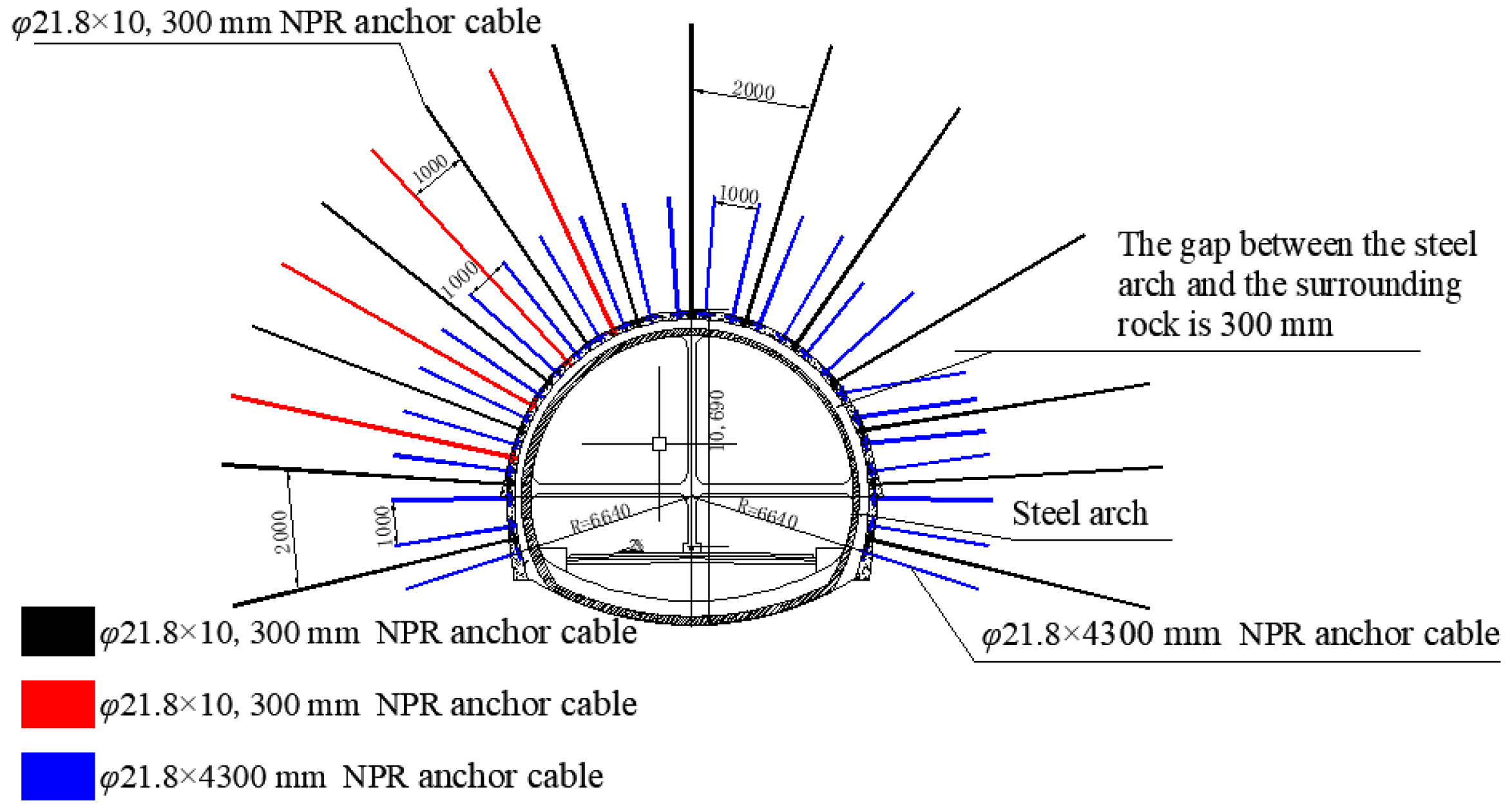

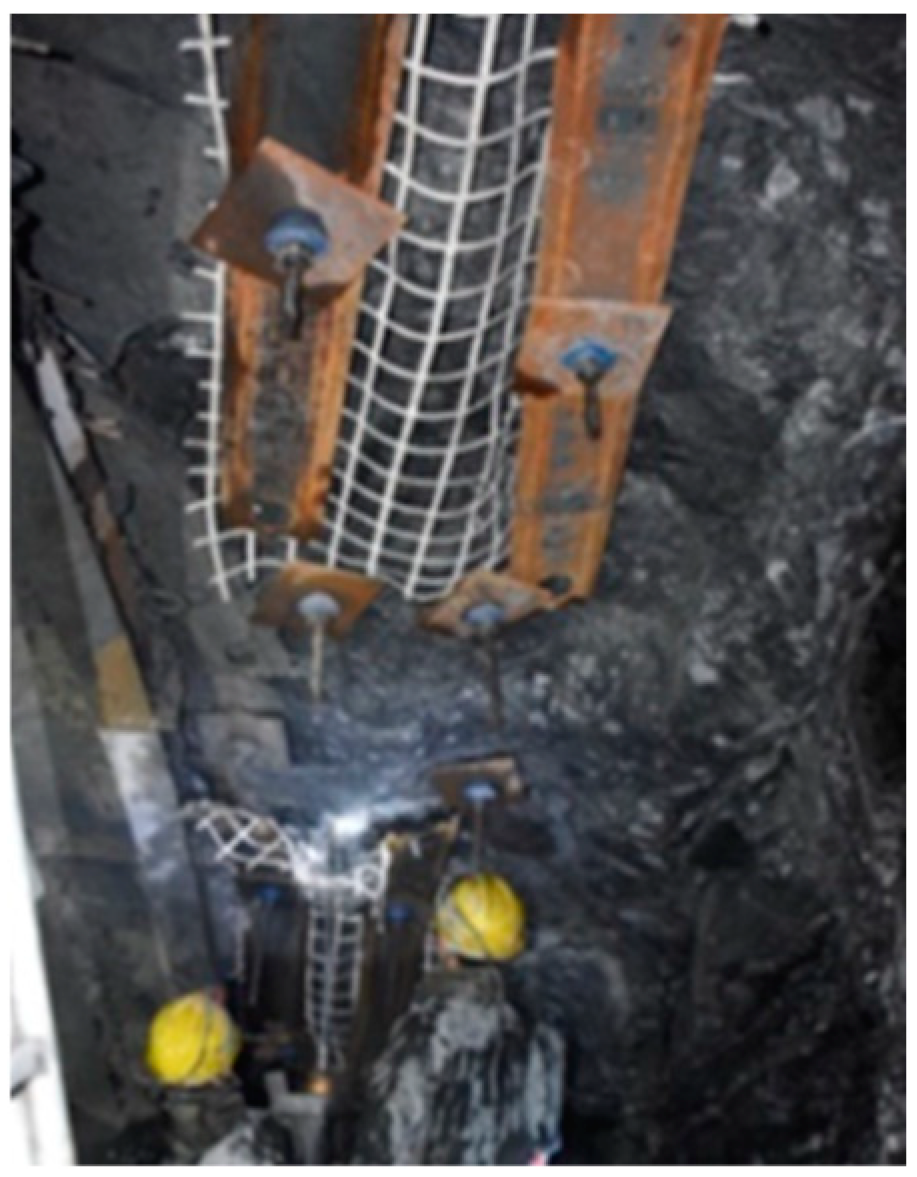

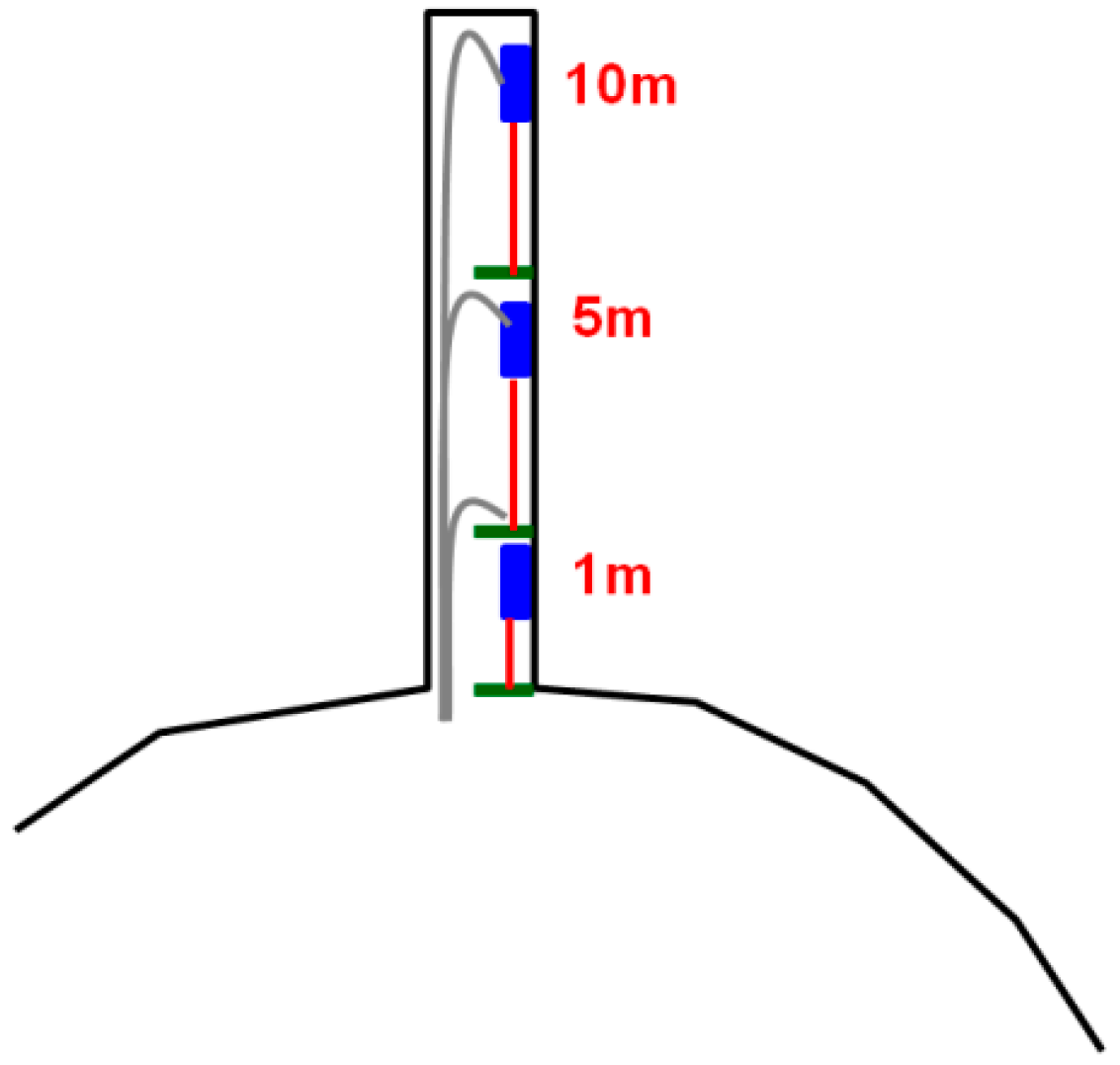
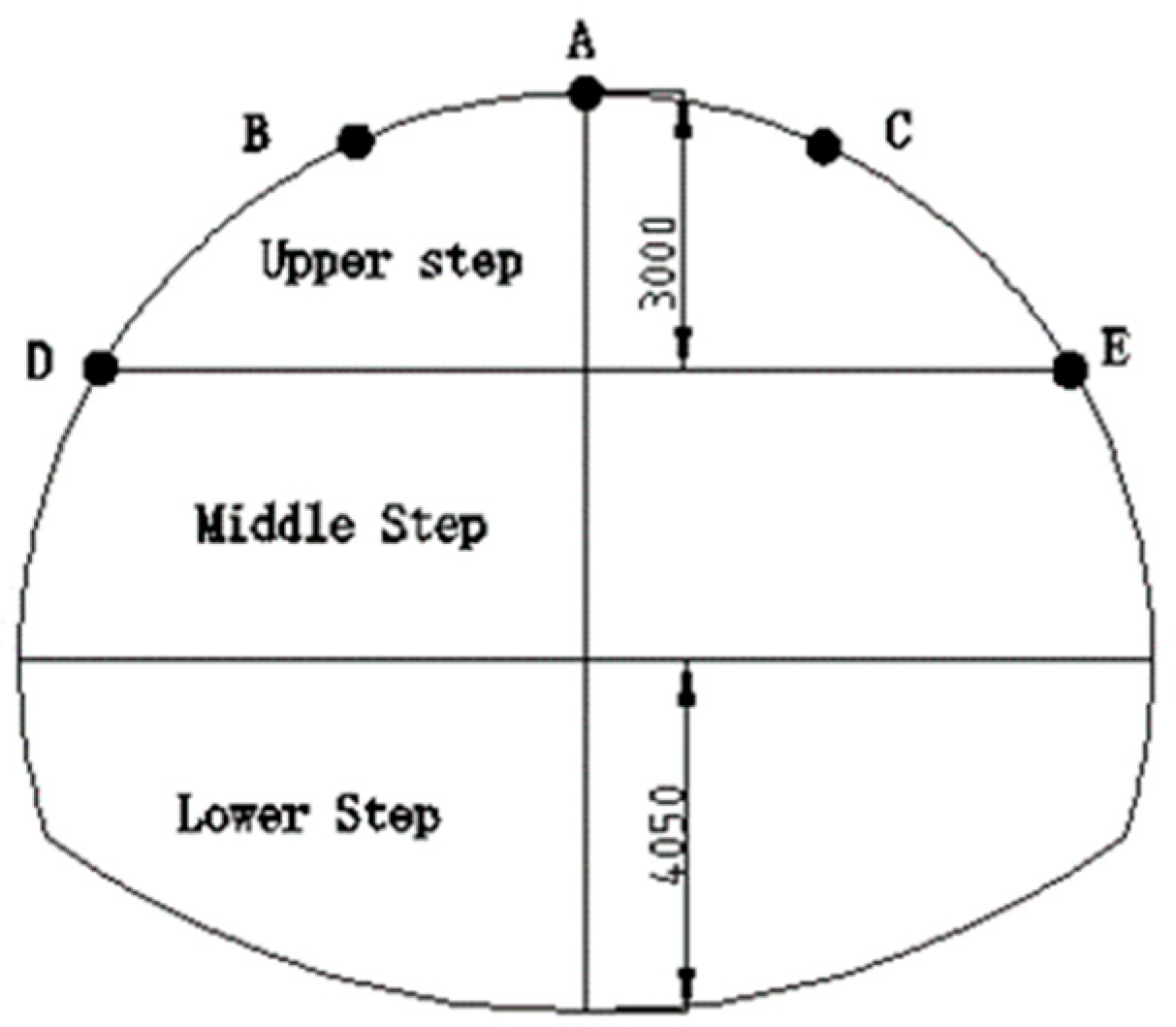
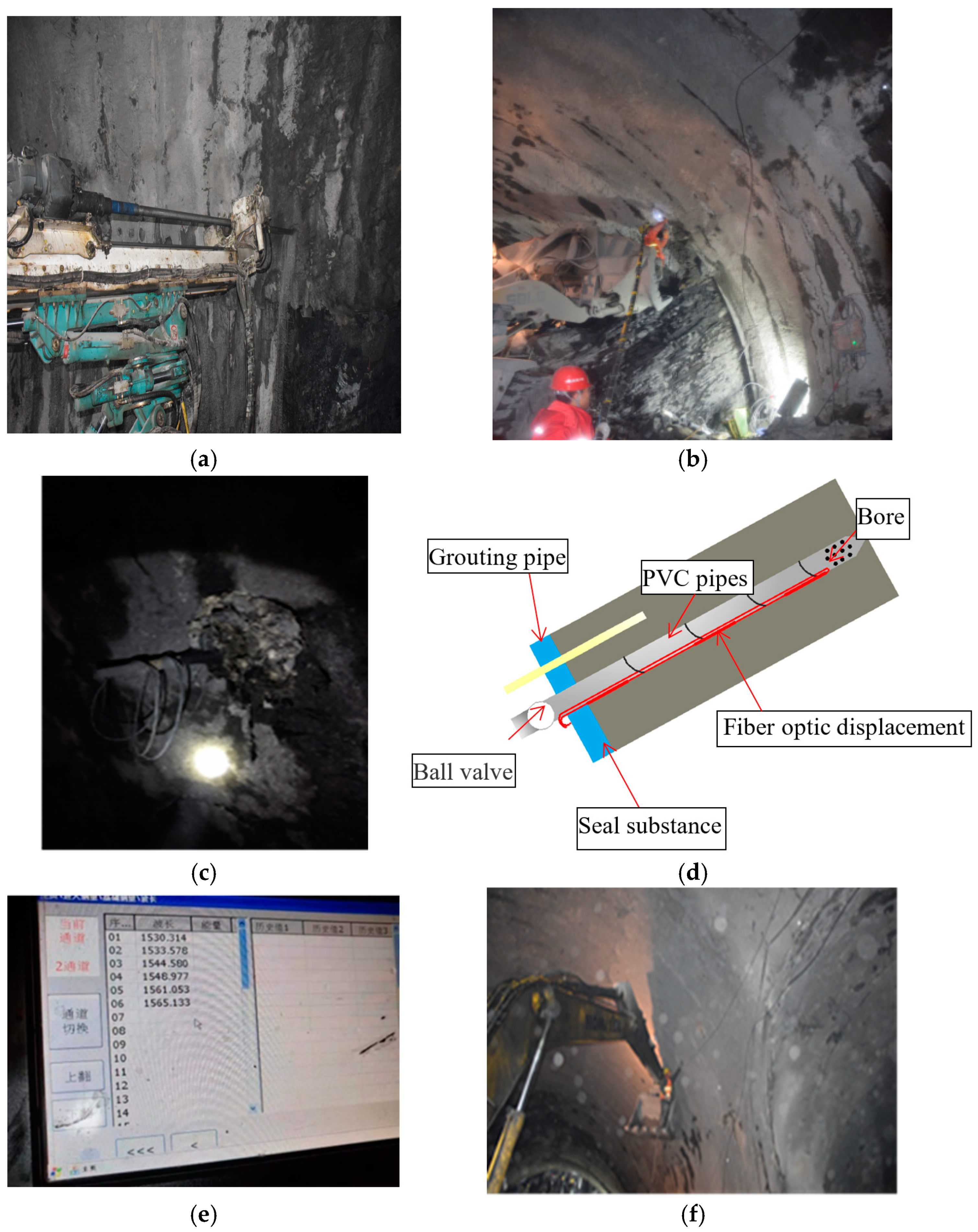
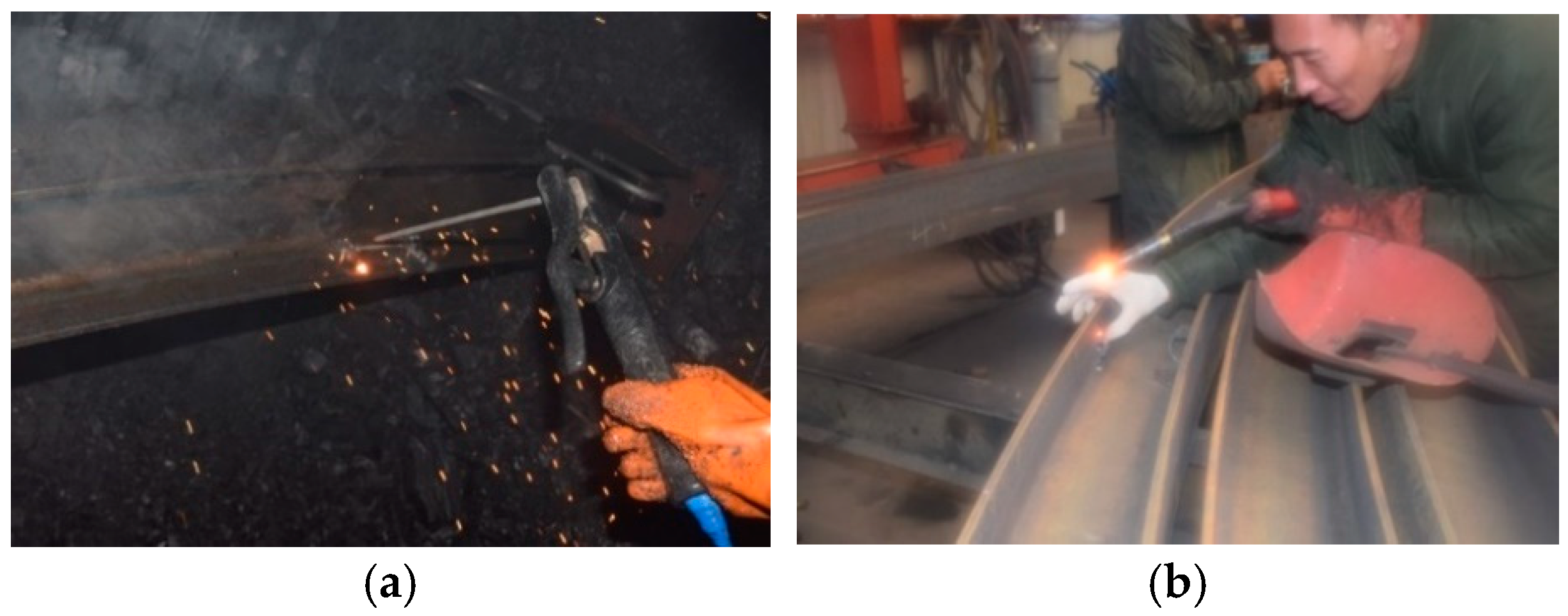
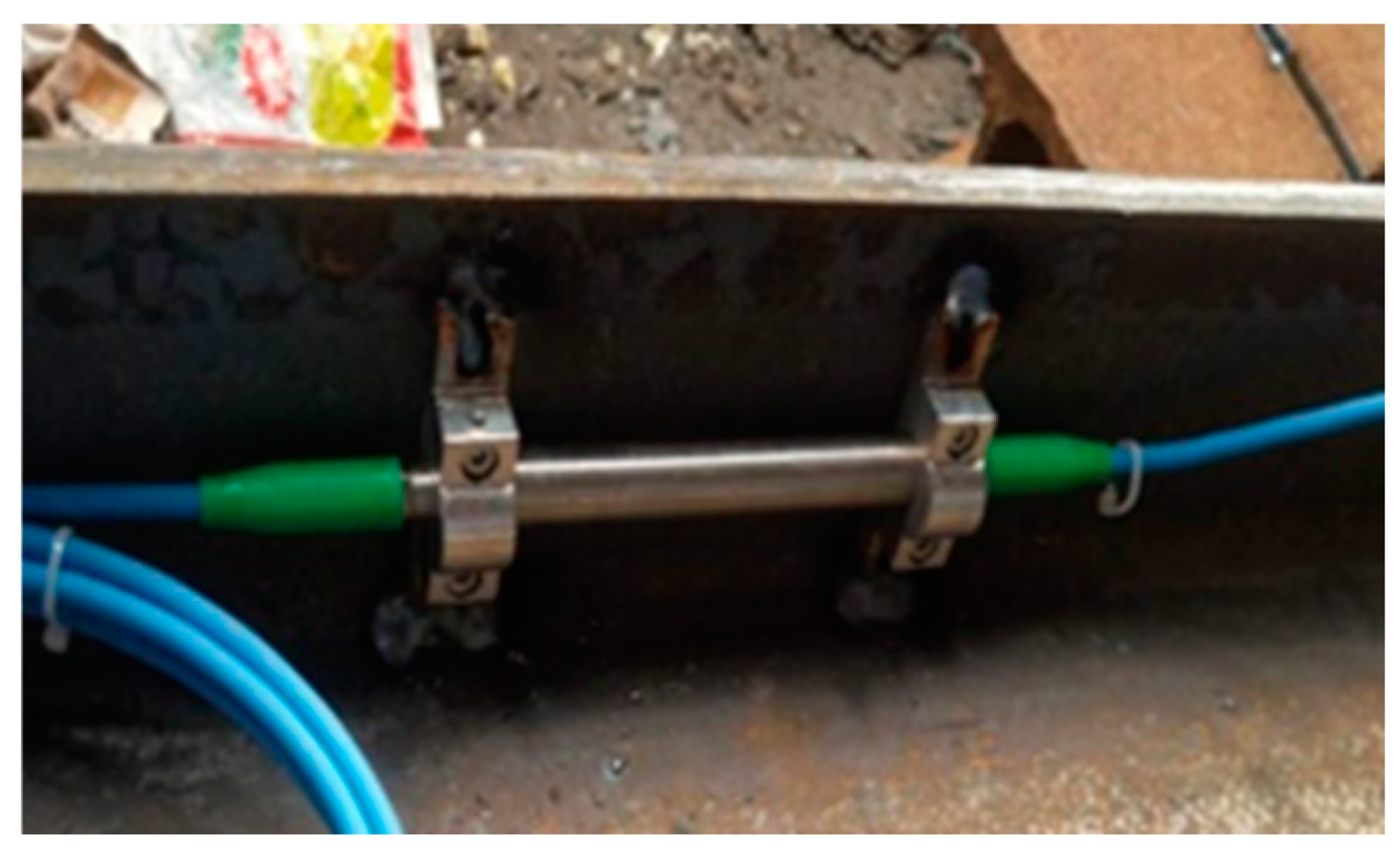

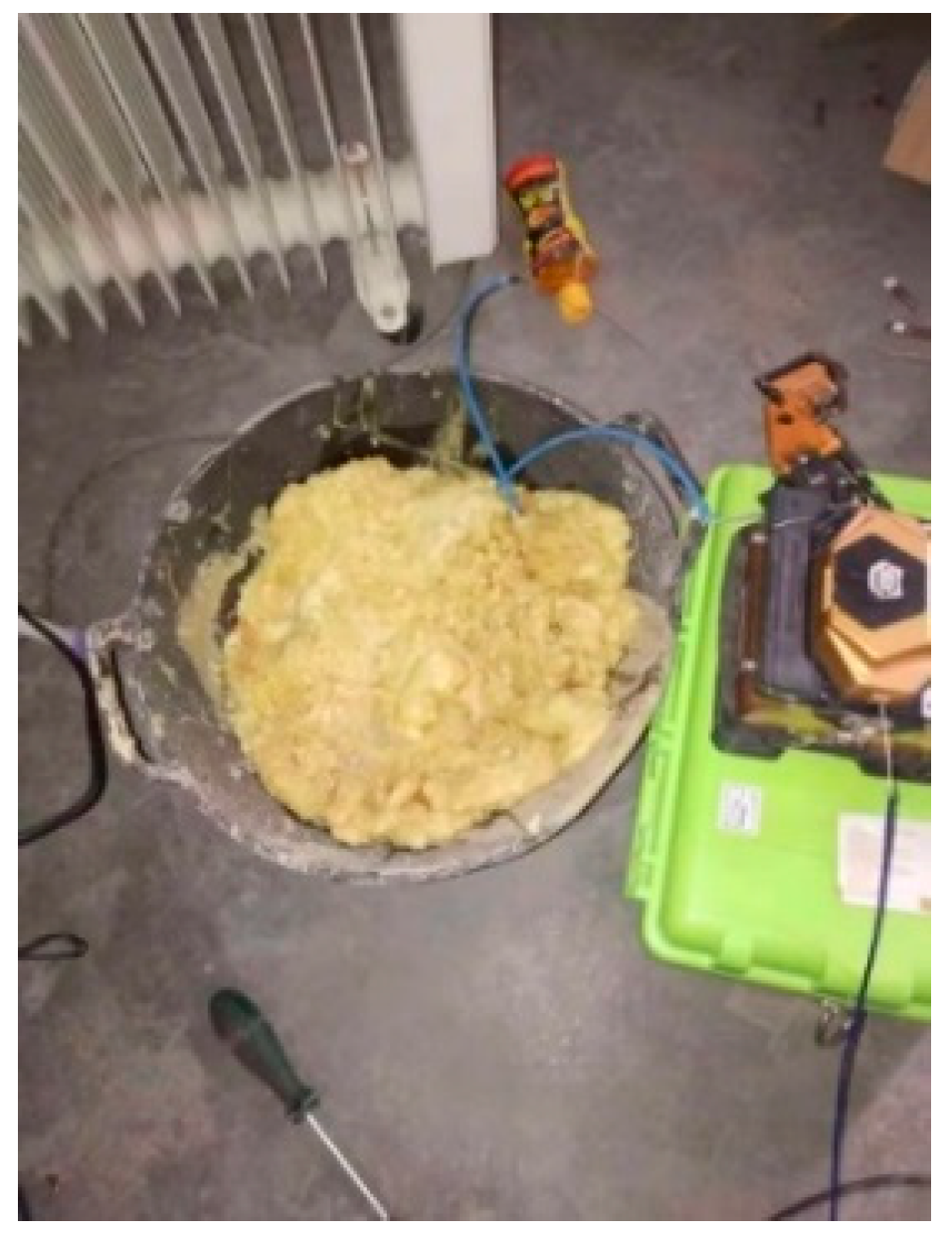

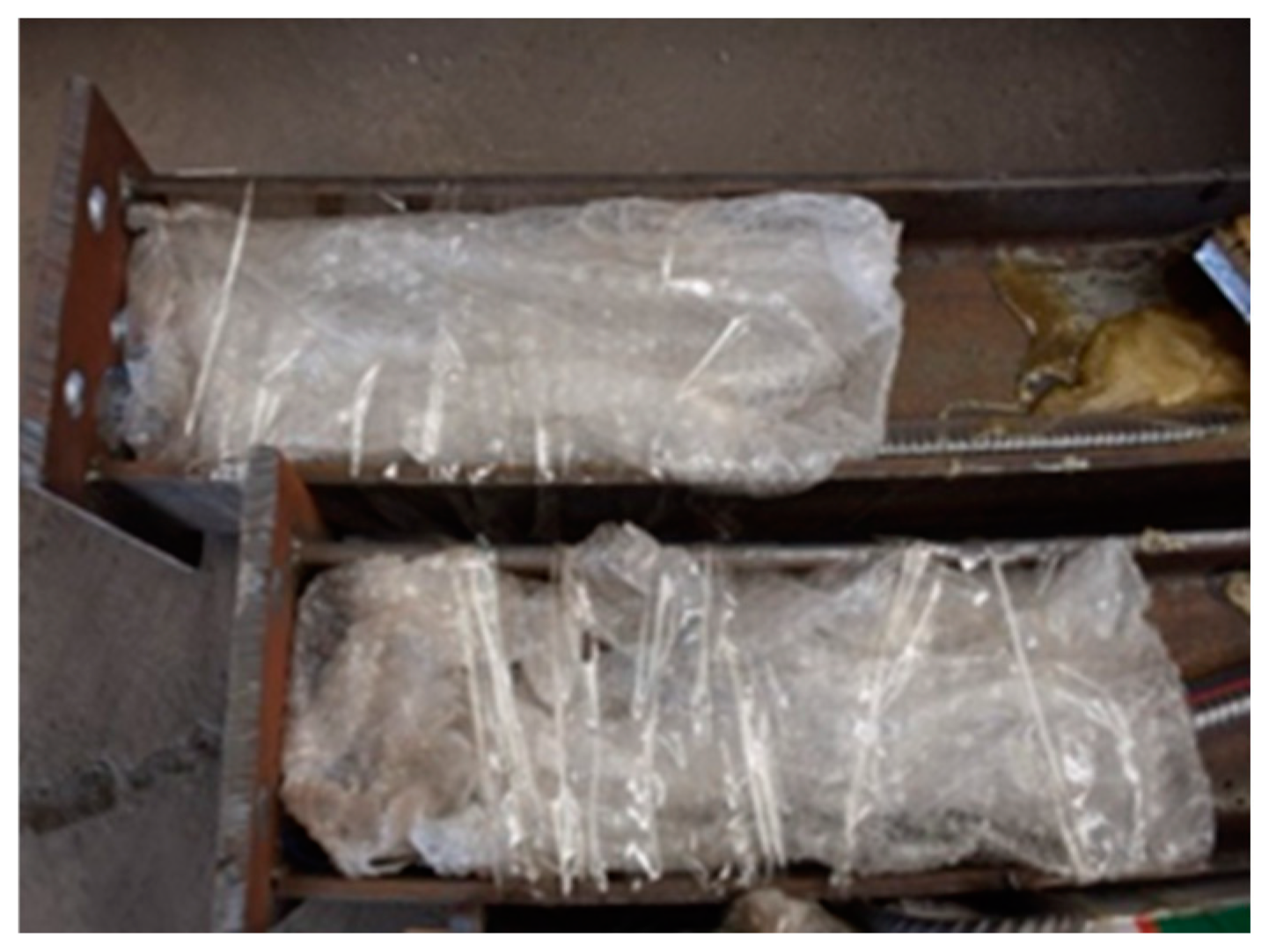






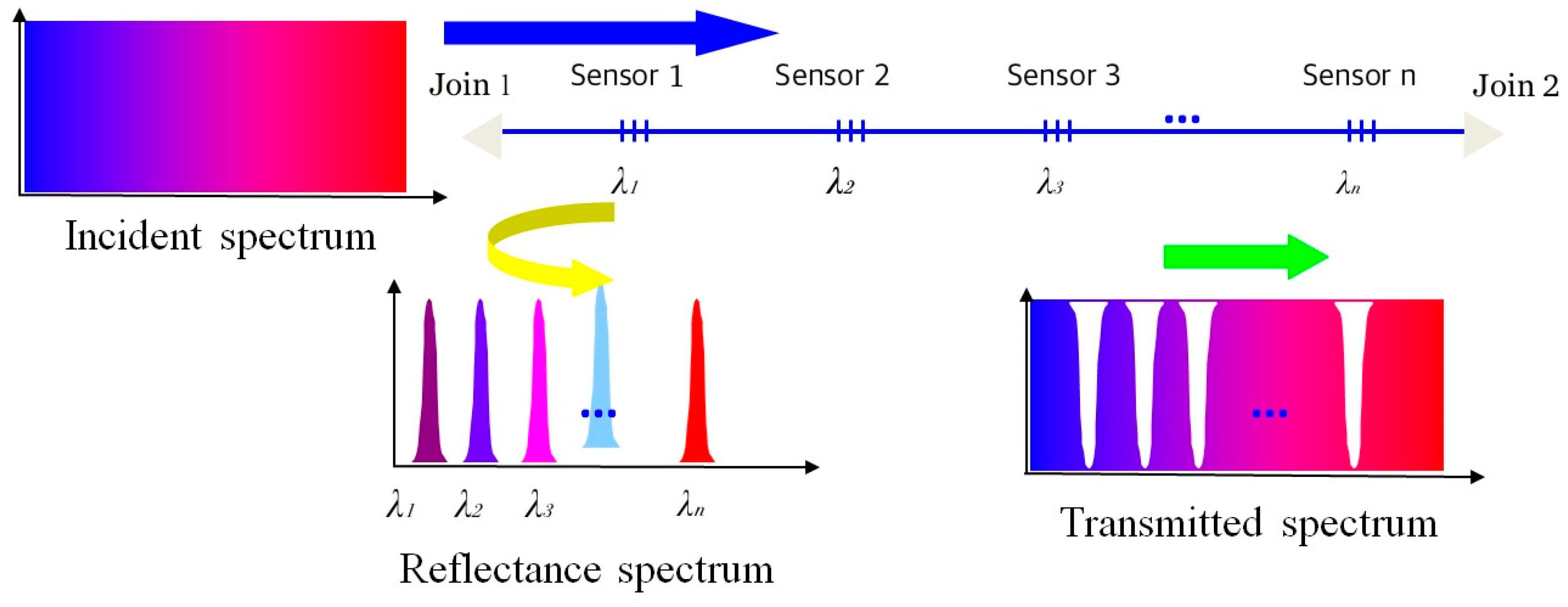
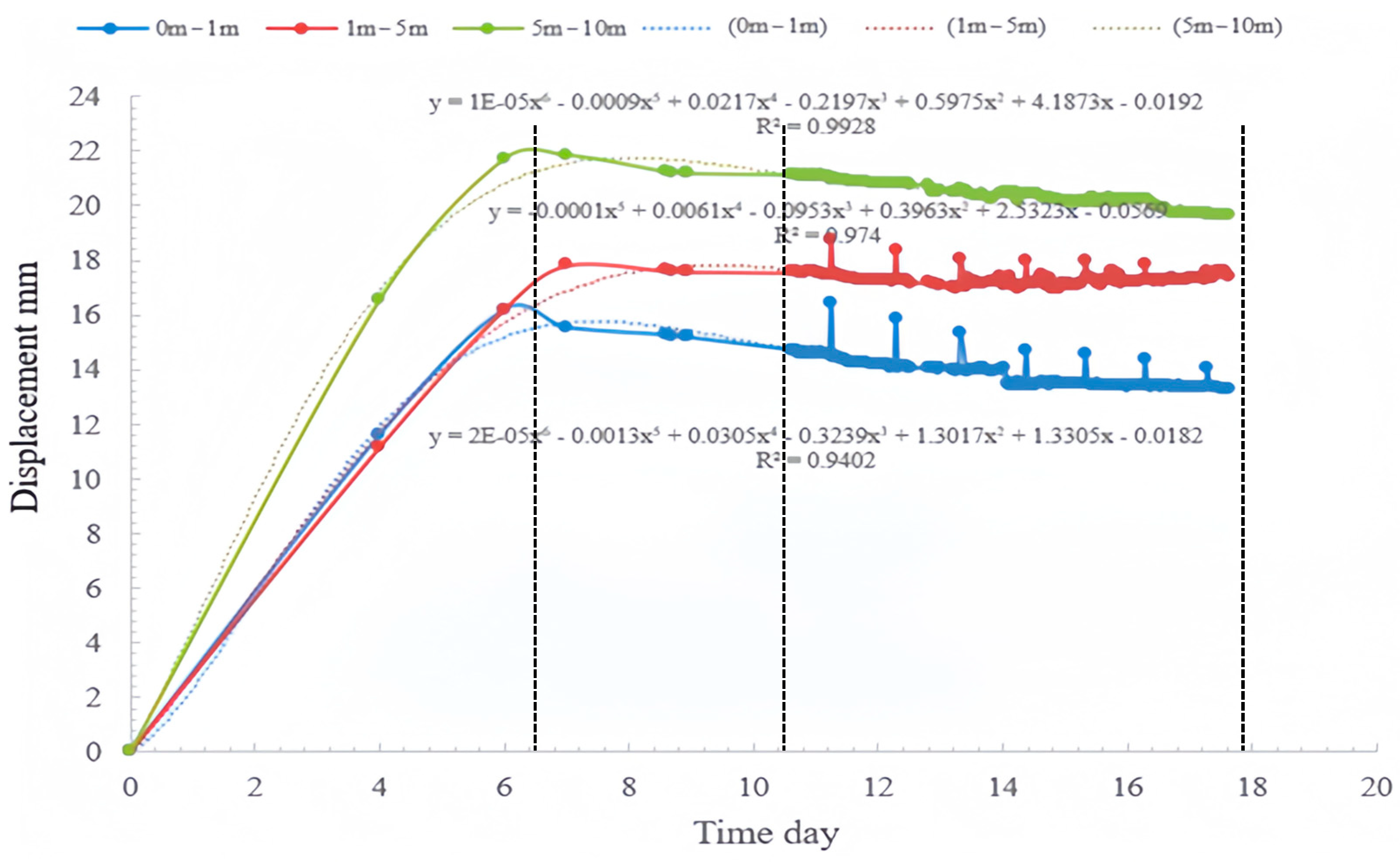

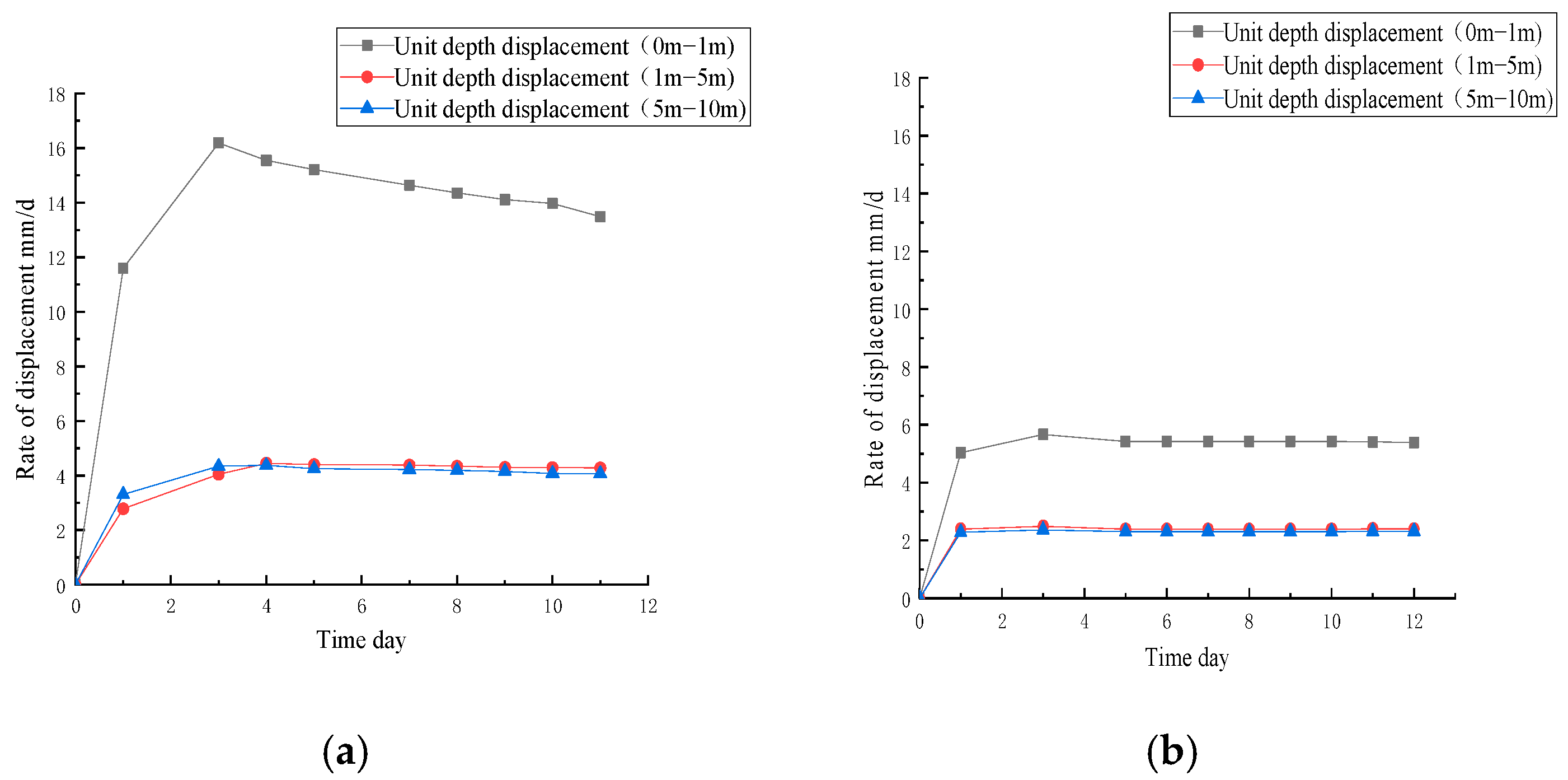
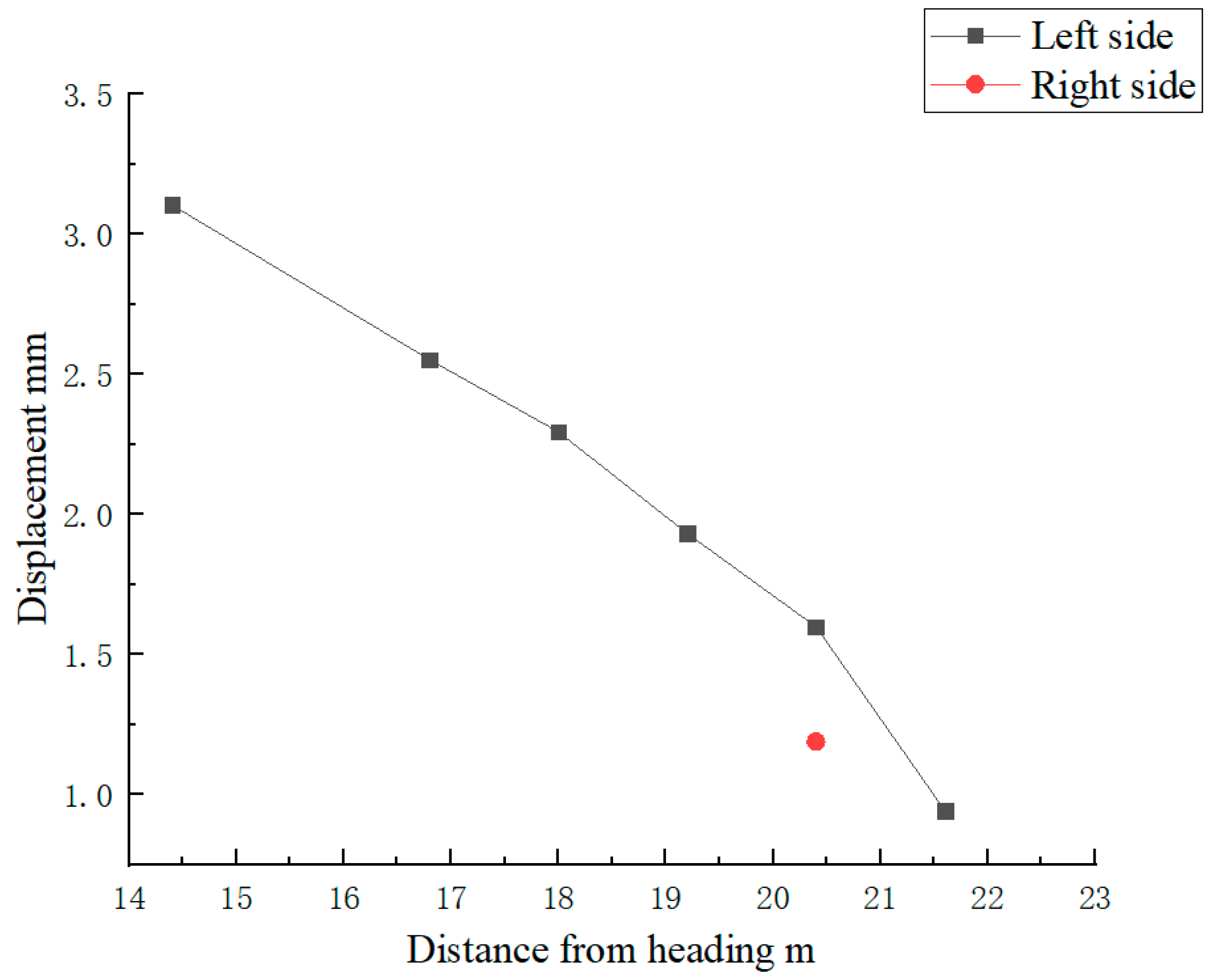

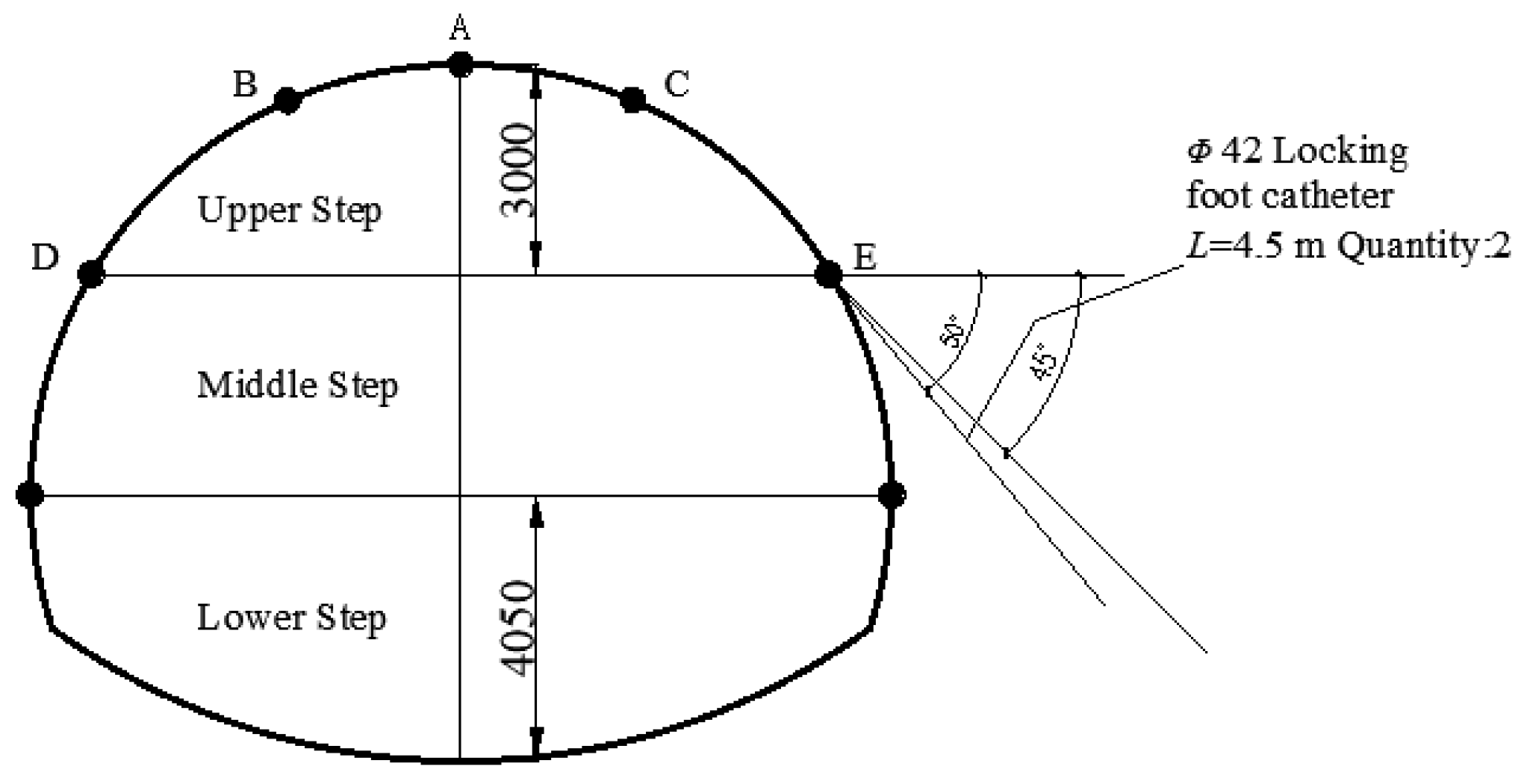
| First support |
|
| Secondary support | C30 reinforced concrete, thickness of 55 cm. |
| Grouting Machine | Pumping Pressure: 0.5 MPa |
|---|---|
| Grouting pipe | L = 4000 mm, D = 40 mm |
| Cement | Mixed on site, water cement ratio: 2:1 |
Disclaimer/Publisher’s Note: The statements, opinions and data contained in all publications are solely those of the individual author(s) and contributor(s) and not of MDPI and/or the editor(s). MDPI and/or the editor(s) disclaim responsibility for any injury to people or property resulting from any ideas, methods, instructions or products referred to in the content. |
© 2024 by the authors. Licensee MDPI, Basel, Switzerland. This article is an open access article distributed under the terms and conditions of the Creative Commons Attribution (CC BY) license (https://creativecommons.org/licenses/by/4.0/).
Share and Cite
Ren, C.; Sun, X.; He, M.; Tao, Z. Application of FBG Sensing Technology for Real-Time Monitoring in High-Stress Tunnel Environments. Appl. Sci. 2024, 14, 8202. https://doi.org/10.3390/app14188202
Ren C, Sun X, He M, Tao Z. Application of FBG Sensing Technology for Real-Time Monitoring in High-Stress Tunnel Environments. Applied Sciences. 2024; 14(18):8202. https://doi.org/10.3390/app14188202
Chicago/Turabian StyleRen, Chao, Xiaoming Sun, Manchao He, and Zhigang Tao. 2024. "Application of FBG Sensing Technology for Real-Time Monitoring in High-Stress Tunnel Environments" Applied Sciences 14, no. 18: 8202. https://doi.org/10.3390/app14188202
APA StyleRen, C., Sun, X., He, M., & Tao, Z. (2024). Application of FBG Sensing Technology for Real-Time Monitoring in High-Stress Tunnel Environments. Applied Sciences, 14(18), 8202. https://doi.org/10.3390/app14188202







